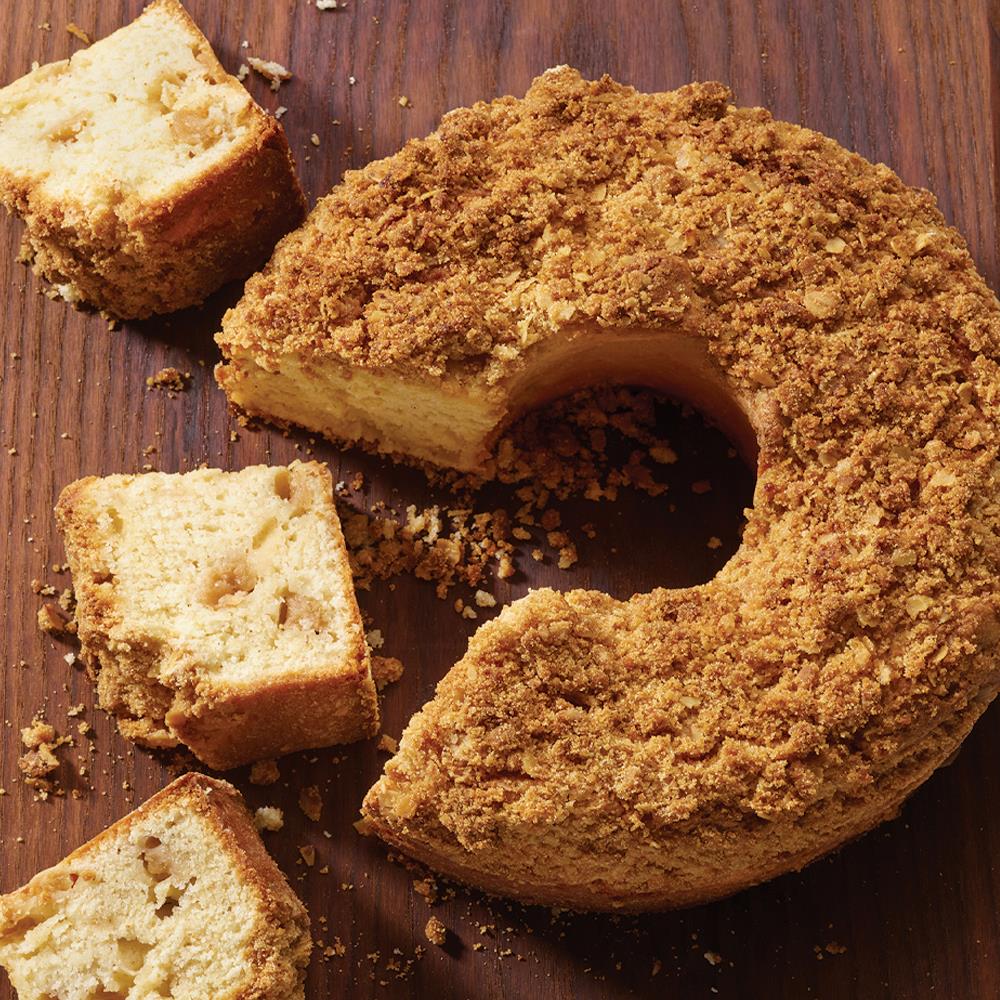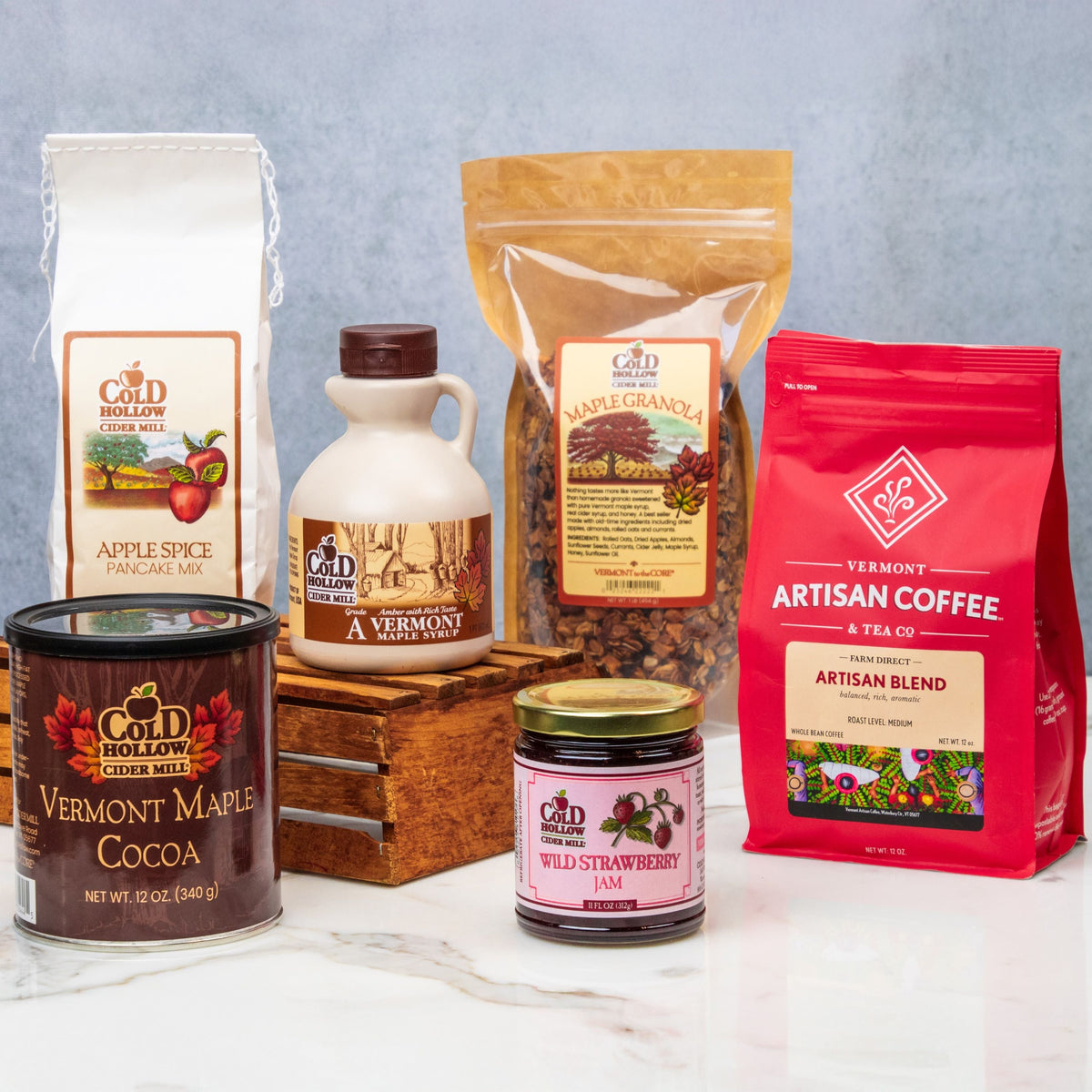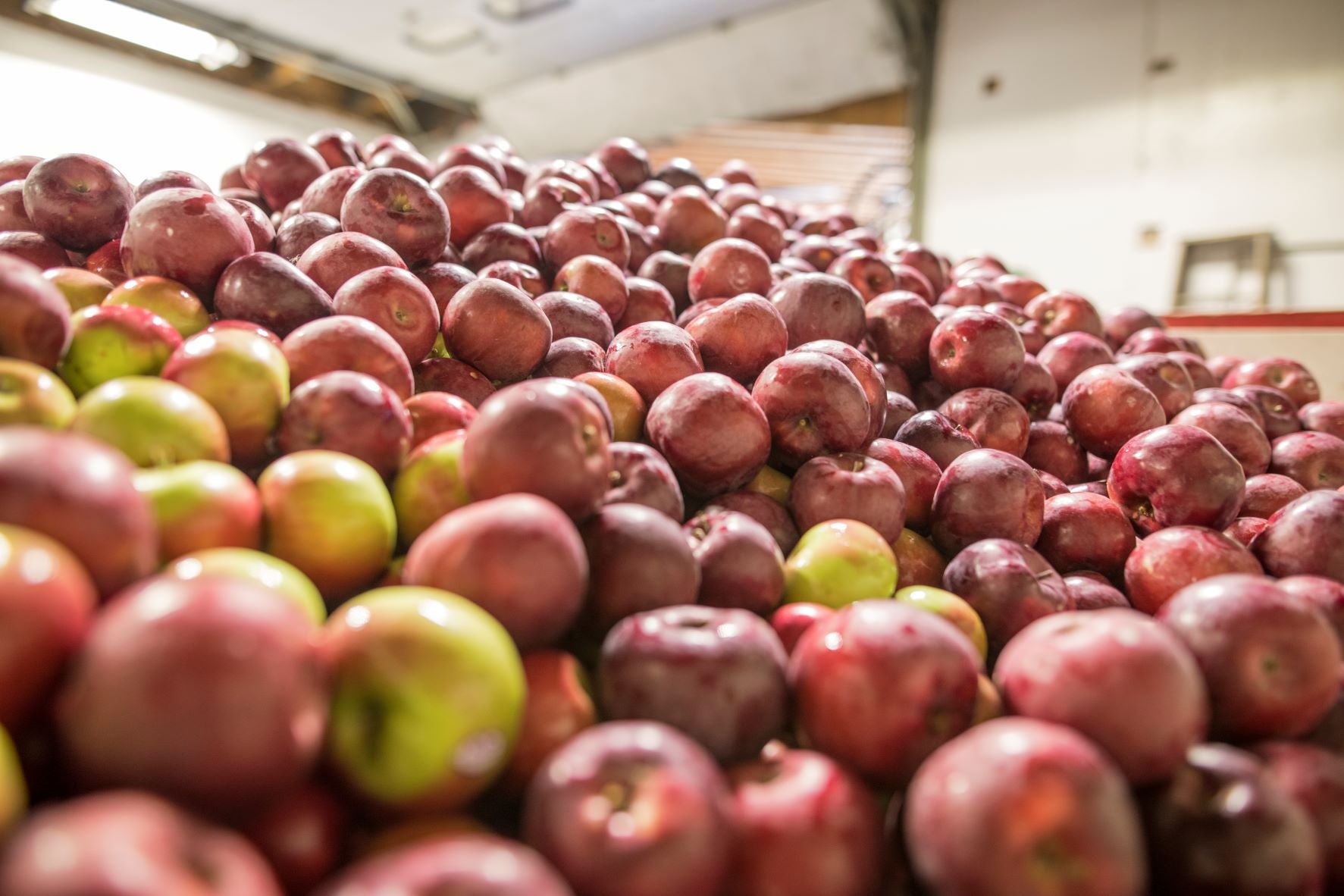Making fresh Vermont apple cider is one of the core things we do here at Cold Hollow Cider Mill. We are a cider mill, after all..
But we choose to make our fresh Vermont apple cider in a unique way: with a 1920 vintage rack and cloth cider press.
What is a Rack and Cloth Cider Press?
Most apple cider producers use modern machinery for pressing apples into cider. But we value the tradition of the rack and cloth method too much. Vermonters have made apple cider the way we make it for hundreds of years and we’re proud to continue this tradition.
It’s not that the rack and cloth cider press is any easier or more efficient. It’s quite the opposite.
We put a lot of resources into maintaining and fixing our rack and cloth cider press when it breaks...which is often. This cider press is old. We inherited it when we purchased Cold Hollow Cider Mill from its original owners. So it’s no surprise that it requires a lot of maintenance.
But we’d rather deal with the inconveniences of a rack and cloth cider press than switch to more modern technology. Sure, modern cider presses would be much more efficient. But what we’d gain in production isn’t worth the sacrifice of tradition. And the flavor is incomparable.
We may be one of the last cider producers to use a rack and cloth press at such a large scale. Which makes the preservation of this method more important than ever.
One of the highlights of visiting Cold Hollow Cider Mill is watching our rack and cloth cider press in action. Our cider press brings people together, gathering around to watch this Vermont tradition come to life.
You can see the large cider press in action when you walk to the back of the mill. Guests gather at the window to watch the fresh apples get pressed into a flow of sweet cider. It’s as if you’re walking back in time to a classic Vermont cider mill, like the many that once operated here in the Green Mountains.
This apple pressing gives visitors like you a connection to where your cider comes from. The end result is 100% juice made from only the best apples.
So how does the vintage rack and cloth press turn apples into cider? Whether you’ve seen it in action or not, here’s everything you need to know about how we make our Vermont apple cider here at the mill.
How To Make Apple Cider
Making fresh apple cider on a rack and cloth cider press is a sight worth seeing. You can watch us press cider several days a week and nearly every day during the fall. Check our events calendar to confirm when we’re pressing apples.
There are five main steps to making our Vermont apple cider on a rack and cloth press:
- Source fresh apples
- Grind the apples into a mash
- Layer the mash onto the racks
- Press the apple mash
- Pasteurize & bottle the cider to drink!
Let’s learn more about how each step works.
Step 1: Source Fresh Apples
A great quality product always starts with the best quality ingredients. So where our apples come from is very important to us.
The apples we use for cider are grown locally in the Champlain Valley. Using local apples supports our neighbors in both Vermont and New York. Locally grown apples also arrive right off the tree, packed with flavor.
Some cider producers make their fresh cider with apples that have fallen off the tree. But we prefer to use apples that are hand-picked right from the branches. This gives us the best quality fruit with peak flavor.
McIntosh apples are the preferred variety for making fresh apple cider. Macs make up about 80% of our Vermont apple cider, with other varieties like Cortlands, Honeycrisp, and Empires mixed in. A fresh, crisp McIntosh apple is incredibly juicy and has a tart flavor that gives our cider a distinctive apple “snap.” It takes about 36 McIntosh apples to make one gallon of apple cider!
We bring a lot of apples to the cider mill. As in millions of pounds. Each year we use between four and six million pounds of apples!
Our apples arrive in 20-bushel (or 800 pound) bins by the truckload. In the fall, we use as many as two tractor-trailer loads of apples a day.
We then inspect and wash the fruit to prepare it for the cider. We only use the best quality apples to make fresh cider. But we also find creative ways to use all apples so the fruit never goes to waste.

Step 2: Grind the apples into a mash
The clean apples are then transported up an elevator to a high-speed grinder. The grinder turns the apples into a mash essential for pressing fresh cider.
This mash contains all parts of the apple, not just the flesh. The seeds, stems, and skins are also mashed up in this step. These parts of the fruit add natural pectins and fibers that give our cider an explosion of apple flavor.
The resulting mash is a soft, mushy mix with visible chunks of apple flesh and skin. Now, it’s time to press the fruit.
Step 3: Layer the mash on the racks
Next, a powerful screw pump pushes the apple mash through a tube and onto the first layer of the rack press.
This plastic rack at the bottom of the press has a layer of polyester cloth draped over it. We squeeze the apple mash right onto this cloth, which will filter the juice from the mash when pressed. The cloth ensures that no seeds, skins, or stems are in the final apple cider product.
The polyester cloth is folded over and then we place a second plastic rack on top with a fresh cloth. Another layer of apple mash is then squeezed onto this rack, and so on. We stack more layers of mash, cloth, and racks on top of each other until 15 layers are created.
Each layer contains about five bushels of apples. All this sweet, juicy fruit is ready to turn into cider.
Step 4: Press the apple mash
Here’s the moment you’ve all been waiting for.
Once we form all the layers of apple mash on the rack, the pressing process begins. A hydraulic piston starts to press down on the top of the layered racks, squeezing out every last drop of the apple’s precious juice.
The design of the racks helps the cider flow from the center of the batch to the edge. This creates the “wow” moment people come to see in person.
As the piston slowly presses down, the juice starts pouring out the side of the press, unleashing a steady flow of fresh Vermont apple cider. We catch every drop of juice in the catch basin below as it’s pressed.
It's important to press the mash slowly to prevent the juice from spraying everywhere. And, most importantly, we only press it once.
Some cider producers use a multi-press method, adding water to the mash after the first press and then pressing several more times. The goal here is to squeeze out even more juice, but we find that it dilutes the crisp apple taste. So we use a first-press method and only press the mash once.
Some modern cider producers also use press aids like rice hulls to increase the juice yield. But we don’t want to incorporate anything that compromises the flavor of our cider. So we don’t use rice hulls or any other types of press aids.
Each press yields about 230 gallons of fresh cider, depending on the juiciness of the apples. And once it’s done, the cloth is as dry as can be. We make sure to get every last drop of fresh cider - nothing is ever wasted.
The squeezed mash is saved after the pressing is complete. These apples may have no juice left, but there’s still value in them! After cider production, our leftover mash is used as compost in Vermont gardens or given to local farmers for livestock feed.
Every bit of apple gets used in our cider-making process. We love the fruit too much to let any parts go to waste.

Step 5: Pasteurize & bottle the cider to drink
Finally, we capture every drop of fresh apple cider during the pressing process and bottle it for you to enjoy!
We don’t add anything to the cider before you drink it. We serve our Vermont apple cider exactly as it is off the press.
We pump the cider into refrigerated bulk tanks from the press before it goes to the bottling plant. Apple cider is perishable, so the drink must stay cold.
Our cider is also flash pasteurized for safety reasons. This is common with all fresh cider. The quick heating and cooling of the cider won’t affect the taste in any way.
Our Vermont apple cider is bottled into the jugs, pints, half-gallon, and gallon containers you see on the shelf. We serve Cold Hollow apple cider here at the mill and ship it to stores and customers around the country.
Feeling thirsty? Order a taste of our Vermont apple cider online.
Watch How Apple Cider is Made
Our rack and cloth cider press is our most prized possession. It brings life to the cider mill and honors the traditional ways of making apple cider here in Vermont.
The crisp, pure taste of our Cold Hollow cider could never be achieved with a modern-day cider press. The unique flavor of our fresh apple cider is due to our rack and cloth cider press.
Come by sometime and watch us press cider. There’s nothing like seeing the rack and cloth cider press in person.
We’ve made our cider-making process super transparent because what you see is what you get. Fresh fruit and a bit of pressure make one of the best-tasting drinks around.
And we’ll continue to invest in the rack and cloth cider press that we use today. It’s a tradition worth holding on to and a rare sight to witness.
View our cider-making schedule to plan your next visit to Cold Hollow.








